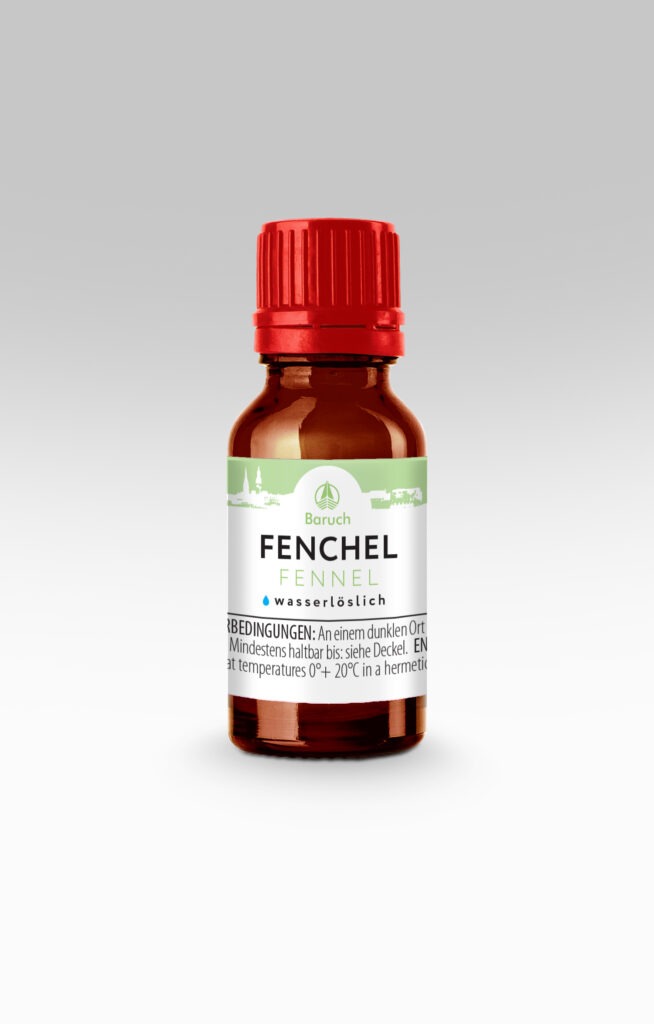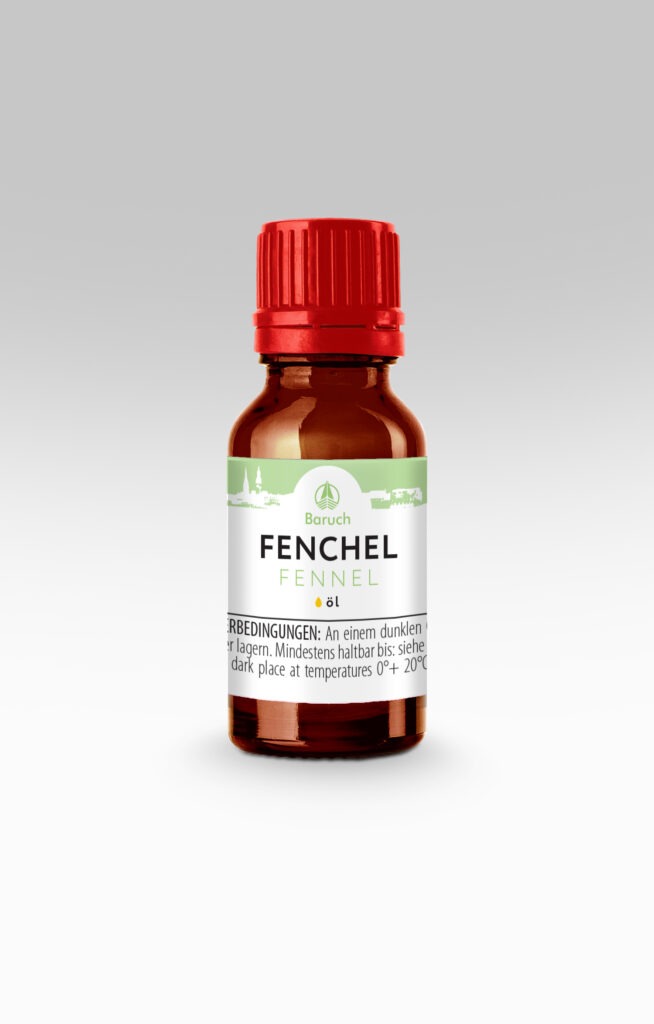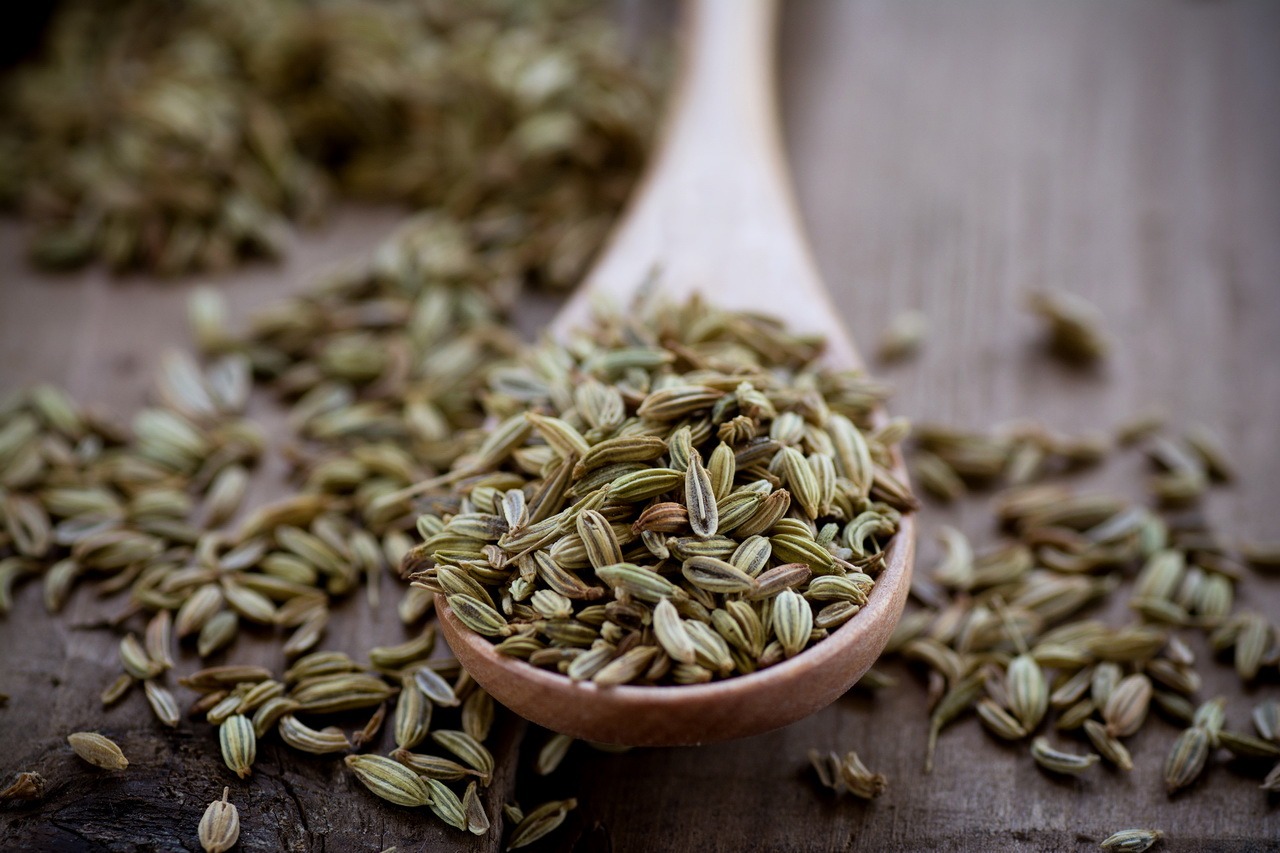The fennel (Foeniculum vulgare) is the only species of the genus Foeniculum within the umbelliferae family (Apiaceae). Today it is a vegetable, aromatic and medicinal plant that is widespread all over the world. It was named Medicinal Plant of the Year 2009. Its name is derived from the Latin word for “hay” as it was considered the best feed for cattle. Fennel is a close relative of celery, coriander and caraway, but has its own characteristic “anise” flavor. At the same time, the essential oil of anise or star anise is quite toxic, and the essential oil and CO2 extract of fennel are completely safe.
Fennel grows wild in the Transcaucasus and neighboring countries of the Black and Caspian Seas. Occurrence in southern Europe and in the steppe areas of the Caucasus. As a medicinal plant, it is grown everywhere.
Fennel CO2 extract has a pronounced antitoxic effect and is recommended for alcohol poisoning. It also helps with gout and arthritis by preventing toxins from building up in the body from becoming infected. CO2 extract from fennel has a toning effect on the smooth muscles of the intestine, which is why it is considered the best carminative, quickly helps with nausea, flatulence, intestinal problems, colic and hiccups. Therefore, fennel is used to prevent gas and bloating in young children.
Fennel CO2 extract actively reduces appetite, therefore fennel has been used for weight loss since Roman times. The CO2 extract is also very active in helping in the treatment of cellulite, while it is necessary to take the drug internally as a dietary supplement and to use CO2 fennel extract as a massage agent. The extract increases breastfeeding time in nursing mothers.
CO2 extract from fennel “Biozevtika” is an oily liquid of yellow color with a pleasant, pronounced, characteristic odor. In the course of gas chromatographic-mass spectrometric investigations, several hundred compounds were analyzed in their composition, of which more than 40 were identified.


Chart 1.The main components of the CO2 extract of fennel
| NAME | CONTENT IN% OF THE AMOUNT OF VOLATILE COMPONENTS | EFFECT |
|---|---|---|
| Anethole | 40 | Carminative, milk-forming, expectorant, stimulates the gastrointestinal tract |
| Felandren | 15 | Anti-inflammatory, antimicrobial, antiviral. Used in perfumery |
| Fenchone | 12 | Very powerful antiseptic |
| Estragole (methylchavicol) | 5 | An ingredient in perfumery compositions. Anise food flavor. Antiseptic |
| Camphene | 4 | Antiseptic, antispasmodic, expectorant, calming, anti-inflammatory, especially for mucous membranes, locally irritating, antitoxic |
| Palmitic acid | 2 | Unsaturated fatty acid for water repellency in cosmetics |
| α- and β-linolenic acid | 1,4 | Unsaturated, essential fatty acid from the class of omega-3 fatty acids. It has a membrane protecting, angioprotective effect. Immunomodulatory, improves brain metabolism |
| Linoleic acid | 1,1 | An essential unsaturated fatty acid of the omega-6 class. It has anti-inflammatory, vasoconstrictor, and aggregating effects. If there is no balance between omega-3 and omega-6 fatty acids, competitive processes can arise that influence the metabolism |
In cosmetics based on fennel, products are made for:
- Treatment of bleeding gums (toothpastes and rinses)
- Skin regeneration
- Prevention of skin aging (oil tones and cares for the skin particularly well)
- Increasing the elasticity and firmness of the skin
- Improvement of the metabolic processes at the cellular level
- Treating acne exacerbations
- Increase in microcirculation and normalization of vascular tone
- Anti-cellulite remedies
- Stimulation of estrogen production
- Normalization of capillary blood flow
- Anti-seborrhea remedies
Chart 2. Application rates, recommendations for the use and storage of CO2 extract from fennel
| Food usage rates | Item А100: 0.003% (30g per ton) Water-soluble microemulsions EMA1: 0.3% (3l per 1000l or 3ml per liter) |
| Application rates in cosmetics | Item А10: 1-3% Item А100: 0.1-0.3% |
| Recommendations for use | It is recommended to add CO2 extracts in the final stages of preparation, in the cooling phase of the end product. |
| Storage Instructions | It is recommended to store CO2 extracts in a closed container in a cool room and avoid direct sunlight. |
